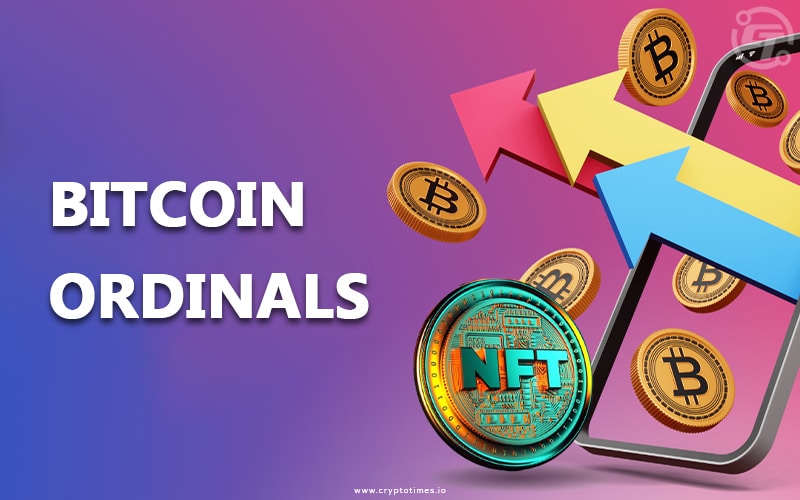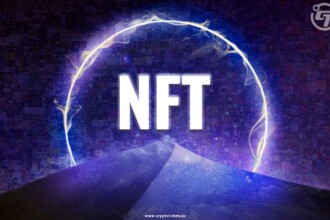The crypto industry incessantly goes through many changes and breakthroughs, and the headlines always flash something alien to what is ever known to humankind. Crypto enthusiasts have a hard time explaining to the general public “NFTs are NOT jpeg,” now we have another thing to start the debate for: Ordinals aka Bitcoin NFTs.
Cryptocurrencies that were initially limited to storing and transferring value, fostered new concepts like DeFi protocols, NFTs, and the metaverse. Bitcoin, the oldest and the world’s most powerful computing blockchain network, which has always looked at NFTs from the sidelines, now has its own Ordinals NFTs. After being minimal for decades, Bitcoin has now expanded its horizons with Ordinals protocols.
While the Web3 players are beaming with potential opportunities, artists can now create and store digital artifacts directly on the Bitcoin blockchain. More than 250,000 Ordinals Inscriptions have been minted so far, skyrocketing bitcoin metrics.
What’s such a great deal about Ordinals Inscriptions (Bitcoin NFTs) that made it a massive hit? Before you get too curious to embrace these Bitcoin NFTs, let’s first understand the concept behind them.
What are Ordinals Inscriptions?
Ordinals Inscriptions are strikingly similar to NFTs but differ in a way that allows people who operate Bitcoin nodes to inscribe each ‘sat’ with data, creating what we call an Ordinals. Sat or satoshi is the smallest unit of Bitcoin (0.00000001 BTC).
The data inscribed on the Bitcoin Ordinals protocol includes smart contracts, which in turn enable NFTs. As such, the Ordinals protocol allows users to send and receive sats that carry optional extra data which can be text, audio, videos, or JPEGs.
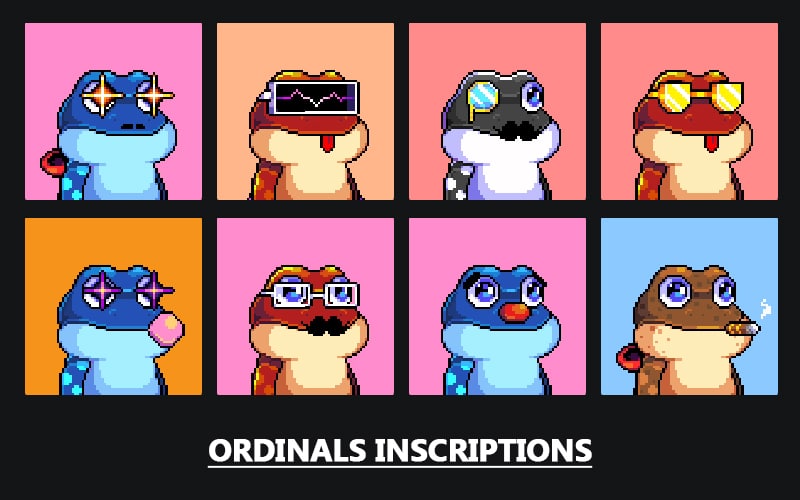
Adding such kinds of data to satoshi is what we call inscription, and the end result can be considered as Bitcoin NFT or an Ordinals. Some popular Ordinal NFTs that were recently launched are Ordinal Punks and Ordinal Penguins. We will give out more details on the notable Bitcoin NFT collections later in this article.
For now understand, Ordinals Inscriptions as digital assets inscribed on satoshis. Inscribing on satoshis is possible because the Taproot upgrade launches on the Bitcoin network on November 2021.
The Inscription process inscribes the data of the content stored into the witness section of the Bitcoin transaction. The “witness section” inscribes JPEGs, audio files, and videos as individual Satoshi, named after the pseudonymous creator of Bitcoin Satoshi Nakamoto. This is possible because of the 2017 Segwit update, a soft fork that increased sizes from 1 MB to 4 MB.
The ordinals inscriptions have been buzzing since software engineer Casey Rodarmor launched the protocol on January 21, and soon users flooded the bitcoin network with images, video games, and other content.
To create Ordinals NFTs, users download Bitcoin core and sync the node to the blockchain. After the sync is completed, one can create an Ordinals wallet and send some satoshis to the wallet.
Well, Ordinals NFTs, Ordinals Inscriptions, and Bitcoin NFTs are nothing but a way to support NFTs on a Bitcoin network. However, its creator Rodarmor prefers to call them “digital artifacts’ instead of Bitcoin NFTs.
All the explanation till now is only the superficial layer and there is a lot to it. Though the crypto community has begun referring to Ordinals as Bitcoins NFTs, it becomes crucial to understand how Ordinals are different from NFTs.
How are Ordinals different from NFTs?
Although Bitcoin Ordinals can be considered NFTs, they have a few key differences. For instance, most NFTs are created and tracked through smart contracts. However, the digital assets that these smart contracts represent are often hosted elsewhere (off-chain).
For example, some NFT platforms use a decentralized storage system, IPFS, to store the NFT artworks, audio files, videos, and so on. On the other hand, Ordinals are inscribed into the satoshi, and hence, Bitcoin-NFTs are stored on-chain.
The Ordinals are validated in blocks along with other transactions and stored in the network’s distributed ledger, unlike traditional NFTs. NFTs usually have metadata that enables creators to change the attributes and appearance of an NFT. Some NFT projects ask users to refresh metadata to update their NFTs with higher-resolution images.
In contrast to NFTs, Ordinals are stored on-chain and hence the data is immutable and cannot be changed. The major key difference between NFTs and Ordinals is that Ordinals don’t provide creators with the option to receive royalties on sales.
To sum it up, ordinals are immutable and complete digital artifacts and unlike NFTs, they cannot be tampered with as they are stored on-chain. The creator of the Ordinals Protocols, Casey Rodarmor believes that these digital artifacts are “intended to reflect what NFTs should be.”
Ordinals’ Extraordinary Craze: Popular Bitcoin NFTs
The craze of Ordinals NFT is taking over the Web3 space with fascinating and eye-widening sales raking in hundreds and thousands of dollars. The most notable Bitcoin NFT collection “Ordinal Punks” quickly gained popularity and rapidly climbed in value.
Inspired by original Ethereum CryptoPunks, Ordinal Punks is a set of 100 Bitcoin NFTs minted within the first 650 inscriptions on the Bitcoin blockchain. Interestingly, the highest-numbered inscription in the collection occupied position #642.
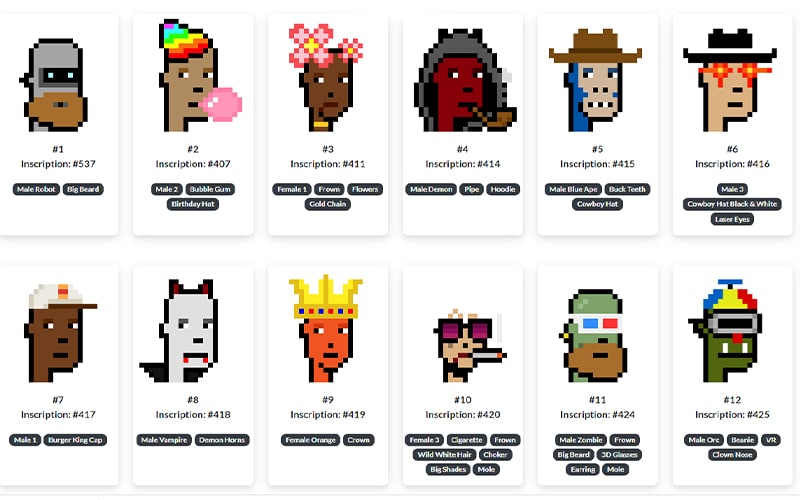
Joining the NFT trend on the Bitcoin Network, infamous digital art club, Yuga Labs brought its exclusive NFT collection “TwelveFold” on the Bitcoin Ordinals Protocol. The Collection features finely rendered 3D elements with hand-drawn features that follows a base-12 art system centred on a 12×12 grid, serving as a visual metaphor for the data cartography of the Bitcoin blockchain.
TwelveFold got outstanding response in its auction as in just 24-hours, it has accumulated $16.5 million, which again proves Yuga Labs’ legacy like BAYC and BAKC.
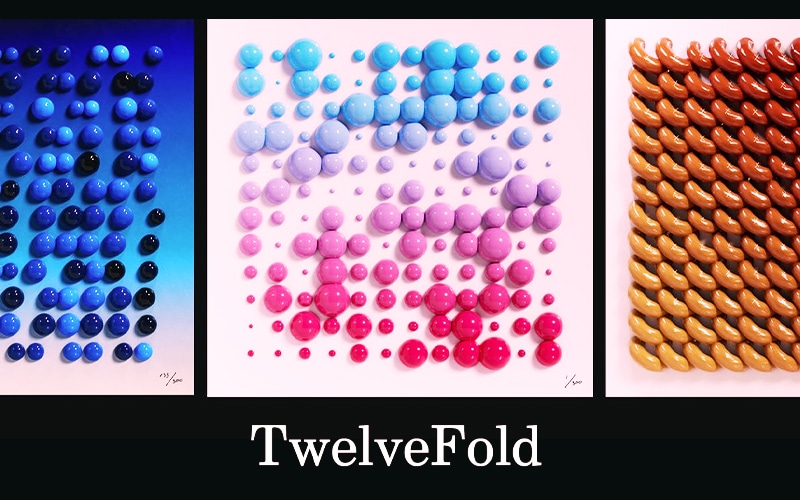
OnChainMonkeys with Inscription 20,219, the team minted 10,000 Ordinals into a single inscription. It stands out among the rest as it is the first 10k collection inscribed on Bitcoin via Ordinals. The price of the OnChainMonkey NFT spiked enormously on OpenSea after the launch of its inscription on Ordinals.
The OnChainMonkeys team notes that the inscription size is less than 20,000 bytes, which indicates a scalable model for other collections to create NFTs on Bitcoin without slowing down the network.
Ordinals Inscriptions are still in their developing stage and as their market matures, more innovative Ordinals NFTs will emerge. Going beyond the JPEG format, Inscription 2042 is a one-second ‘wet fart’ sound, which sold for 12.3 BTC ($280,000). Well, the crypto space is indeed bizarre.
If you want to determine the rarity level of Ordinals NFTs, then Rodarmor has provided some helpful tips on how to do so. Based on the whole on-chain nature and scarcity of the block space, you can interpret rarity in the following ways.
Common: Any sat that is not the first sat of its block
Uncommon: If the first sat of each block
Rare: If the first sat of each difficulty adjustment period
Epic: If the first sat of each halving epoch
Legendary: If the first sat of each cycle
Mythic: If the first sat of the genesis block
Note that, there is no official Ordinals marketplace, either centralized or decentralized. Thus, Ordinals sales are difficult to verify. Most Ordinals sales have occurred on private discord channels between Bitcoin node operators.
How to buy Ordinals NFTs
Following are the steps on how to buy and trade Ordinals.
Step 1: Get the right wallet
There are not many options for those who want to store and transfer their Bitcoin Ordinals Inscriptions due to the lack of a designated wallet interface. However, seeing the increasing popularity of Ordinals, three wallets – Ordinals Wallet, Xverse, and Hiro Wallet – have recently declared their support for Bitcoin-Ordinals functionality.
Also Read: Best Bitcoin Ordinals Wallets out There
While these wallets’ functionality is limited (more features would be introduced soon, as per their developers), they are a good place to start if you don’t want to hassle with the logistics of setting up a separate Bitcoin wallet on your own.
Or, you can set up a Bitcoin wallet that allows enough customization to receive Ordinals Inscriptions.
Step 2: Find Ordinals to buy
The Ordinals market is purely OTC (over-the-counter or peer-to-peer) trading right now. To find Ordinal NFT projects, you have to join the Ordinals Discord Channel. In this channel, collection creators link their Discords where you can buy their Ordinals.
Remember, buying Ordinals OTC is a very tricky job as the procedure involves steps that are warned against in Web3. You have to connect with people on Discord, send money before receiving an Ordinals, conduct direct transactions with other people, etc. All these things are too risky, hence we would recommend you be cautious with these steps.
Ordinals Transforming Bitcoin Network
Ordinals have been a huge hit, tempting thousands of new users to the Bitcoin Blockchain. Since its launch, the non-zero Bitcoin addresses touched a record 44 million.
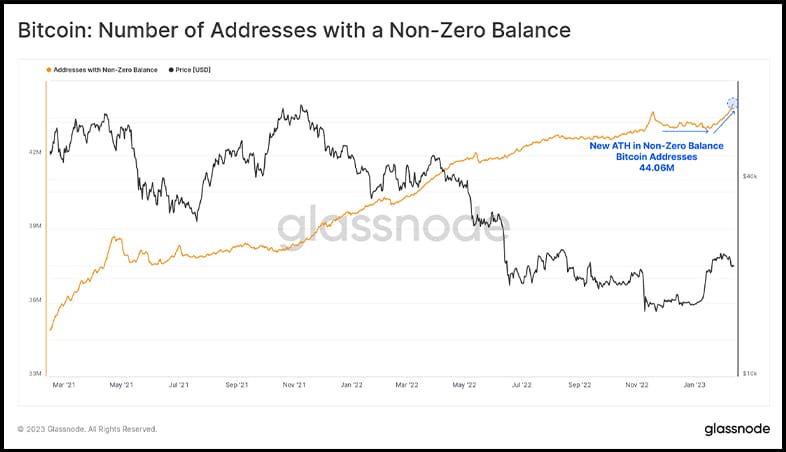
In addition, Bitcoin block sizes have also increased over the last few weeks since these satoshis now carry extra on-chain data. The Mean Block Size increased to between 3.0MB and 3.5MB. In comparison, the average Bitcoin block size before the introduction of Ordinals NFTs was around 1.5 MB to 2.0 MB.
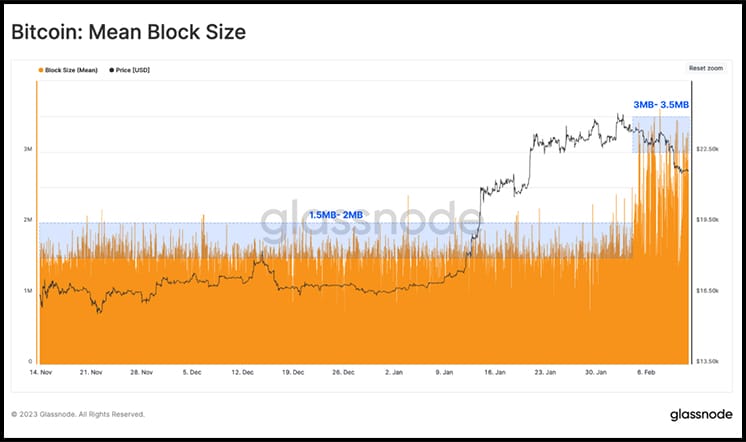
Generally, miners were only allowed to receive network fees for monetary transactions. However, due to Ordinals, the network now can be used for non-monetary purposes as well, for the first time in history. This will boost transaction volumes and generate more revenue for miners.
This additional revenue stream could be extremely important when block rewards dwindle or no longer exist in the future.
Despite all these remarkable feats, some critics are calling ordinals a frivolous waste of block space. Others have pointed out an increase in transaction fees due to Ordinals. Bitcoin has always been criticized for its astronomical energy usage and Ordinals have added to the cause.
Some are even saying the carbon footprint of NFTs on Ethereum wasn’t looking great before The Merge but it was nothing compared to on-chain Bitcoin NFTs. So, what future holds for Ordinal NFTs?
Future of Ordinals
Ordinals NFTs are still in their infancy and there is a need to develop more seamless methods of inscribing on Bitcoin and wallets that make it possible to view Bitcoin NFT once created. Most recently, Gamma, A Bitcoin NFT marketplace on Stacks, started an initiative to offer a paid service that allows users to inscribe images and text.
Other projects are also providing new ways to make Ordinals a success and more adaptable. However, currently, Ordinals inscriptions require the maintenance of a fully synchronized Bitcoin node. This makes it a highly technical process but Ordinals no matter how complicated, hold so much potential and can revolutionize the concept of NFTs above and beyond.


